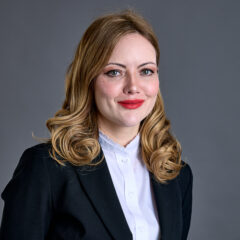Before coming to the Bar, Rebecca was a post-doctoral researcher in Stroke and Dementia at the University of Cambridge. She completed the GDL at Nottingham Law School, gaining a Distinction and the prize for outstanding contribution to the course, as well as winning the GDL mooting competition.
Rebecca was awarded the Frank Quickfall Scholarship from Gray’s Inn and completed her BTC at Manchester Law School in which she achieved a Distinction.
Rebecca has quickly built a busy practice of trials, CMCs, CCMCs, and Fast Track and Multi Track applications. She undertakes work in a broad range of areas including personal injury, nuisance, landlord and tenant, commercial, and credit hire.
Praised by clients for her in-depth knowledge & understanding and commitment to each case, Rebecca prides herself on her analytical approach and creative problem solving that derives from her academic background.
In her spare time, Rebecca is also a trustee of a local charity which provides free legal information on almost anything. Away from the law, she enjoys surfing & sailing.
Areas of Expertise
- Abuse
- Animals & Equine
- Clinical Negligence
- Commercial Dispute Resolution
- Consumer Law
- Costs & Litigation Funding
- Counter Fraud
- Credit Hire
- Criminal Regulatory
- Data Protection & Information
- Disease
- Employment
- Featured
- Group Actions
- Housing
- Inquests
- Insolvency
- Insurance
- Motor
- Personal Injury
- Planning & Environmental
- Professional Discipline & Regulation
- Professional Negligence
- Property & Real Estate
- Public Sector & Not for Profit
- Serious Injury
- Sports
- Wills, Probate & Inheritance
-
Privacy Notice - How I Use Your Data
Privacy Notice - Rebecca Brooks

